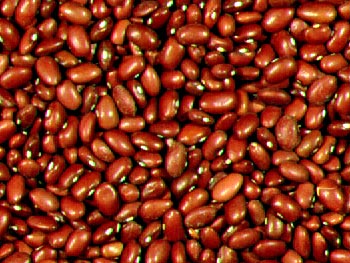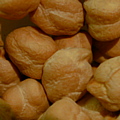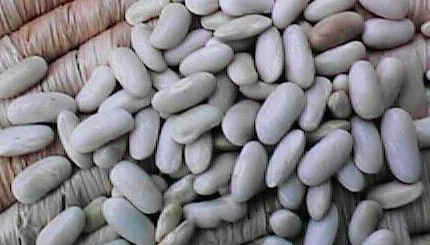|
|
 |
Taxonomy |
|
|
Unscramble and define the following words: |
| 1) toaxynom | __________________________ |
| 2) iunalesn | __________________________ |
| 3) rteolasit | __________________________ |
| 4) ahrecrhyi | __________________________ |
| 5) lptnas | __________________________ |
| 6) smilaan | __________________________ |
| 7) gidonkm | __________________________ |
| 8) yuhpml | __________________________ |
| 9) snioiidv | __________________________ |
| 10) scals | __________________________ |
| 11) oredr | __________________________ |
| 12) almyfi | __________________________ |
| 13) suegn | __________________________ |
| 14) cssiepe | __________________________ |
| 15) oibliamn | __________________________ |
| 16) umnenactlreo | __________________________ |
| 17) cubsspiese | __________________________ |
| 18) arieytv | __________________________ |
| 19) pgehylyno | __________________________ |
| 20) messciytsta | __________________________ |
| 21) honyticepegl | __________________________ |
| 22) etre | __________________________ |
| 23) oslsifs | __________________________ |
| 24) moopogyhrl | __________________________ |
| 25) csdilsatci | __________________________ |
| 26) idedrev | __________________________ |
| 27) drcmalgoa | __________________________ |
| 28) rechbaacataraei | __________________________ |
| 29) beuiaetrca | __________________________ |
| 30) optsitar | __________________________ |
| 31) ianalmai | __________________________ |
| 32) tpnlaae | __________________________ |
| 33) guifn | __________________________ |
| 34) imoand | __________________________ |
| 35) auyraek | __________________________ |
| 36) hareca | __________________________ |
| Dichotomous Keying |
The identification of biological organisms can be greatly simplified using tools such as dichotomous keys. A dichotomous key maker is an organized set of couplets of mutually exclusive characteristics of biological organisms. You simply compare the characteristics of an unknown organism against an appropriate dichotomous key. These keys will begin with general characteristics and lead to couplets indicating progressively specific characteristics. If the organism falls into one category, you go to the next indicated couplet. By following the key and making the correct choices, you should be able to identify your specimen to the indicated taxonomic level.
Couplets can be organized in several forms. The couplets can be presented using numbers (numeric) or using letters (alphabetical). The couplets can be presented together or grouped by relationships. There is no apparent uniformity in presentation for dichotomous keys.
Sample keys to some common beans used in the kitchen:
Numeric key with couplets presented together. The major advantage of this method of presentation is that both characteristics in a couple can be evaluated and compared very easily.
 |
 |
 |
|
 |
 |
||
| 1a. | Bean round | Garbanzo bean |
| 1b. | Bean elliptical or oblong | Go to 2 |
| 2a. | Bean white | White northern |
| 2b. | Bean has dark pigments | Go to 3 |
| 3a. | Bean evenly pigmented | Go to 4 |
| 3b. | Bean pigmentation mottled | Pinto bean |
| 4a. | Bean black | Black bean |
| 4b. | Bean reddish-brown | Kidney bean |
Alphabetical key with couplets grouped by relationship. This key uses the same couplet choices as the key above. The choices within the first and succeeding couplets are separated to preserve the relationships between the characteristics.
| A. | Bean elliptical or oblong | Go to B |
| B. Bean has dark pigments | Go to C | |
| C. Bean color is solid | Go to D | |
| C. Bean color is mottled | Pinto bean | |
| D. Bean is black | Black bean | |
| D. Bean is reddish-brown | Kidney bean | |
| B. Bean is white | White northern | |
| A. | Bean is round | Garbanzo bean |
Rules for Using Dichotomous Keys:
When you follow a dichotomous key, your task becomes simpler if you adhere to a few simple rules of thumb:
Exercise 1:
Using a container of beans, use one of the dichotomous keys above to identify the beans. Glue the beans to the card provided and label them with their common name. Indicate what steps you followed to arrive at your answer. Turn the card in to your instructor. Compare your answers to the instructor’s descriptions and type specimen.
Exercise 2:
Obtain samples of the snack chips provided. Develop a dichotomous key to identify the snacks. In your notebook, keep track of the characteristics you used to differentiate between the different snack families. What are the values of the characteristic for each snack food?
Exercise 3:
Use the dichotomous key to conifers provided below to identify conifers.
A Key to Selected North American Native and Introduced Conifers
| 01a | Leaves needle-like | Go to 02 |
| 01b | Leaves flattened and scale-like | Go to 27 |
| 02a | Leaves are in clusters | Go to 03 |
| 02b | Leaves are borne singly | Go to 15 |
| 03a | Two to five leaves in a cluster | Go to 04 Genus Pinus |
| 03b | More than five leaves in a cluster | Go to 14 |
| 04a | Leaves mostly 5 in a cluster | White Pine (Pinus strobus) |
| 04b | Leaves 2 or 3 in a cluster | Go to 05 |
| 05a | Leaves mostly 3 in a cluster | Go to 06 |
| 05b | Leaves mostly 2 in a cluster | Go to 08 |
| 06a | Leaves twisted, less than 5 inches long | Pitch Pine (Pinus rigida) |
| 06b | Leaves straight, more than 5 inches long | Go to 07 |
| 07a | Leaves 5-10 inches long, cones very thorny | Loblolly pine (Pinus taeda) |
| 07b | Leaves mostly over 10 inches long, cones unthorned | Longleaf pine (Pinus palustris) |
| 08a | Leaves mostly longer than 3 inches | Go to 09 |
| 08b | Leaves mostly shorter than 3 inches | Go to 11 |
| 09a | Leaves rigid, bark grayish | Black pine (Pinus nigra) |
| 09b | Leaves narrower than 1.6mm; bark reddish brown or brown | Go to 10 |
| 10a | Cones thornless, twigs brown | Norway pine (Pinus resinosa) |
| 10b | Cones thorny, twigs whitish | Shortleaf pine (Pinus echinata) |
| 11a | Leaves mostly wider than 1.5 mm | Go to 12 |
| 11b | Leaves mostly narrower than 1.5 mm | Go to 13 |
| 12a | Leaves mostly longer than 35 mm | Mugho pine (Pinus mugo) |
| 12b | Leaves mostly shorter than 35 mm | Jack pine (Pinus banksiana) |
| 13a |
Twigs whitened |
Virginia pine (Pinus virginiana) |
| 13b | Twigs not whitened | Scotch pine (Pinus sylvestris) |
| 14a | Leaves deciduous, clusters of 20-40 | Larch (Larix sp.) |
| 14b | Leaves persistent, stiff, and four sided | True cedar (Cedrus sp.) |
| 15a | Needles short and sharp | Giant Sequioa (Sequioadendron giganteum) |
| 15b | Needles longer than 12 mm | Go to 16 |
| 16a | Tiny pegs on twigs | Go to 17 |
| 16b | No pegs on twigs | Go to 22 |
| 17a | Pegs square, needles sharp | Go to 18 Genus Picea |
| 17b | Pegs round, needles flat and blunt | Hemlock (Tsuga sp.) |
| 18a | Leaves dark green or yellow green | Go to 19 |
| 18b | Leaves blue-green | Go to 20 |
| 19a | Branchlets droop | Norway spruce (Picea abies) |
| 19b | Branchlets do not droop | Red spruce (Picea rubens) |
| 20a | Leaves at right angles to stems | Blue spruce (Picea pungens) |
| 20b |
Leaves point forward |
Go to 21 |
| 21a | Leaves about 12 mm long, seed cones 15-32 mm in length, crown narrow and pointed | Black spruce (Picea mariana) |
| 21b | Leaves about 19 mm long, seed cones 50 mm in length, spire-like crown |
White spruce (Picea glauca) |
| 22a | Buds large and pointed | Douglas fir (Pseudotsuga sp.) |
| 22b | Buds small and rounded | Go to 23 |
| 23a | Terminal buds round and clustered | True fir (Abies sp.) |
| 23b | Terminal buds not clustered | Go to 24 |
| 24a | Needles white underneath | Go to 25 |
| 24b | Needles green underneath | Go to 26 Genus Taxus |
| 25a | Needles pointed |
Redwood (Sequoia sempervirens) |
| 25b | Needles blunt | Hemlock (Tsuga sp.) |
| 26a | Leaves 18 mm long or less with inconspicuous midrib | American Yew (Taxus canadensis) |
| 26b | Leaves 25 mm long or more with conspicuous midrib | Japanese Yew (Taxus cuspidata) |
| 27a | All leaves short and sharp | Giant Sequioa (Sequioadendron giganteum) |
| 27b | Some leaves not sharp | Go to 28 |
| 28a | Cones round | Go to 29 |
| 28b | Cones not round | Go to 31 |
| 29a | Cones soft and leathery | Juniper (Juniperus sp.) |
| 29b | Cones woody | Go to 30 |
| 30a | Cones under 12 mm in diameter | False cypress (Chamaecyparis) |
| 30b | Cones over 12 mm in diameter | Cypress (Cuppressus) |
| 31a | Cones resemble rosebuds | White cedar or arbor vitae (Thuja) |
| 31b | Cones resemble duck bills | Incense cedar (Calocedrus) |
Conifers to Identify:
 |
 |
| 1. Name: | 2. Name: |

|

|
| 3. Name: | 4. Name: |
  |

 |
| 5. Name: | 6. Name: |
  |
  |
| 7. Name: | 8. Name: |
  |
  |
| 9. Name: | 10. Name: |
  |
  |
| 11. Name: | 12. Name: |
  |
  |
| 13. Name: | 14. Name: |
  |
  |
| 15. Name: | 16. Name: |
Photos Copyright Nearctica.com
Click here for correct answers to conifer key
| Classification |  |
Section 18-1 History of Taxonomy
1. Define taxonomy.
2. Who was first to classify organisms?
3. Explain Aristotle’s taxonomy of organisms.
4. Why are common names not good to use when classifying organisms? Give an example.
5. Describe Carolus Linnaeus’s system of classification.
6. Linnaeus used ____________________ or form & structure to classify organisms.
7. List Linnaeus’s levels of organization in order starting with the broadest classification level.
8. Name Linnaeus’s two kingdoms.
9. What is the difference between phylum & division? How are they alike?
10. What classification level contains only a single type of organism?
11. Give the taxonomy for a lion.
12. In Linnaeus’s naming system, ___________________ words are used as the name.
13. Explain Linnaeus’s 2-word naming system.
14. What is Linnaeus’s naming system called?
15. Write the scientific name for man.
16. The ___________ name is written first and must always be __________________.
17. The ____________ name is written second and should _____________ be capitalized.
18. Name 2 things a species name may do.
19. What are varieties?
20. What are subspecies?
21. Write a scientific name that includes a subspecies.
22. What do modern taxonomist use to classify organisms?
23. What is phylogeny?
Section 18-2 Modern Phylogenetic Taxonomy
24. Name 6 things used by modern taxonomists to classify organisms.
25. Classification of an organism should reflect its __________ or ___________ history.
26. What is systematics?
27. Name a tool used by systematic taxonomists.
28. What is a phylogenetic tree?
29. Draw a phylogenetic tree showing the possible relationships among animal phyla.
30. Do phylogenetic trees ever change? Explain.
31. What complex animal group is located at the top of your phylogenetic tree?
32. Do all organisms have complete fossil records? Explain.
33. Which structures show that organisms are more closely related, homologous or analogous?
34. Features similar in structure but with different functions are called _______________ structures.
35. Early patterns of similar ______________________ development show relationships.
36. The fertilized egg or _______________ divides by mitosis.
37. What is the blastula & make a sketch?
38. What is the blastopore, & what does it become?
39. The blastopore becomes the mouth in many animals except in ________ where it becomes their ______________.
40. What invertebrate group is most closely related to the vertebrates?
41. Taxonomists compare macromolecules such as ____________, ____________, & ____________ to show similarities among species.
42. If two organisms have similar banding patterns on their chromosomes then they are _______________ related.
43. What is used in cladistics to show evolutionary relationships?
44. What is a derived character & give an example?
45. Do shared derived characters show common ancestry?
46. What is a cladogram?
47. Sketch a cladogram for vertebrates.
Section 18-3 Modern Systems of Classification
48. The discovery of 2 broad types of bacteria led taxonomists to develop what type of classification system?
49. Name the 6 kingdoms & tell which are prokaryotes & which are eukaryotes.
50. Describe members of the kingdom Archaebacteria.
51. In what type of environment are Archaebacteria found?
52. Did Archaebacteria carry on photosynthesis?
53. What kingdom contains true bacteria?
54. Name 4 things Eubacteria do that affect your life.
55. Do all true bacteria use oxygen? Explain.
56. How do all bacteria reproduce?
57. Why are bacteria able to evolve so quickly? Give an example.
58. Most protists are ______ organisms, but some like the giant kelp are _________ without __________.
59. Since protists are eukaryotes, what special structures do they contain?
60. Some protists like ________________ feed on other organisms, while __________ have chloroplasts & make their own food.
61. Describe the characteristics of fungi.
62. How do fungi get food?
64. Multicellular plants are in the ____________________ kingdom.
65. Most plants are ________________ and make food energy by ________________.
66. Most plants live on ________________.
67. Name 4 examples of major plant groups.
68. Describe the characteristics of the animal kingdom.
69. Most animals have _______________ body organization.
70. Both plants & animals reproduce ________________.
71. Using information about __________ RNA, __________ developed the three _______ classification system.
72. Name the 3 domains.
73. Domain ___________ contains the same organisms as the kingdom Archaebacteria.
74. Domain ________________ contains the same organisms as kingdom Eubacteria.
75. What is included in domain Eukarya?
76. What characteristic do all members of the domain Eukarya have in common with each other
Dichotomous Key
The identification of biological organisms can be greatly simplified using tools such as dichotomous keys. A dichotomous key is an organized set of couplets of mutually exclusive characteristics of biological organisms. You simply compare the characteristics of an unknown organism against an appropriate dichotomous key. These keys will begin with general characteristics and lead to couplets indicating progressively specific characteristics. If the organism falls into one category, you go to the next indicated couplet. By following the key and making the correct choices, you should be able to identify your specimen to the indicated taxonomic level.
Sample key to some common beans used in the kitchen:
 |
 |
 |
 |
 |
| 1a. | Bean round | Garbanzo bean |
| 1b. | Bean elliptical or oblong | Go to 2 |
| 2a. | Bean white | White northern |
| 2b. | Bean has dark pigments | Go to 3 |
| 3a. | Bean evenly pigmented | Go to 4 |
| 3b. | Bean pigmentation mottled | Pinto bean |
| 4a. | Bean black | Black bean |
| 4b. | Bean reddish-brown | Kidney bean |
Click here for correct answers